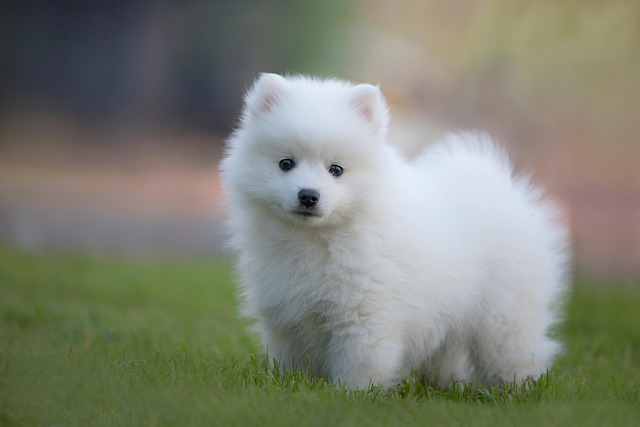
How do i train my dog to be obedient?
Watching your dog dart across the park ignoring your calls isn’t just frustrating—it can put them at risk near busy streets or public spaces.
On the lawn of the residential area or along the paths of the park, it is common to see a scene where two dogs accidentally meet. First, they look at each other alertly, and then they start barking one after another. Why do dogs call each other when they meet? This seemingly ordinary behavior hides rich knowledge of animal behavior and dogs' unique social codes.
From an evolutionary perspective, the ancestor of dogs, wolves, were social animals that communicated and communicated through various sounds, body movements, and smells. Although dogs have become pets in human life through long-term domestication, they still retain many of their ancestral instinctual behaviors. Calling is one of the important ways for dogs to communicate. In the wild, wolves use their calls to convey various messages, such as summoning companions, warning of danger, and declaring territory. Dogs inherit this characteristic, and when they meet, their barking becomes their "language" for expressing their thoughts and feelings.
Territorial awareness is an important reason why dogs call each other when they meet. Every dog has its own sense of territory, and when they detect other dogs entering their designated territory, they will warn them by barking, declaring their sovereignty over the area. For example, when a dog is playing in its own yard and suddenly a stranger approaches the entrance, it will bark loudly in an attempt to drive away the other dog. This kind of barking is full of vigilance and aggression, which is the instinctive reaction of dogs to protect their territory. In the world of dogs, territory is crucial for their survival and sense of security, so they will spare no effort to defend it.
Social needs are also one of the factors why dogs call each other when they meet. Dogs are social animals that crave communication and interaction with their peers. When two dogs meet, barking may be a way for them to greet each other. Just like how humans greet each other warmly, dogs express their friendliness and interest in each other through barking. This kind of call is usually gentle, accompanied by friendly body movements such as wagging the tail and relaxing the body. They communicate their intentions to each other through a combination of vocalizations and body language, attempting to establish social connections.
Emotional states can also affect the barking of dogs when they meet. If dogs are in a state of tension, fear, or anxiety, they may protect themselves by barking when encountering other dogs. For example, a timid dog may make sharp barks out of fear when facing a larger and more dominant dog, indicating its unease and hoping that the other person will not approach. On the contrary, when dogs are in an excited state, they will also bark excitedly when they see their own kind, which is their way of expressing joy and excitement.

As owners, when we see dogs barking at each other, we need to learn to correctly interpret the meaning of their barking and make appropriate responses. If dogs bark due to territorial awareness, we should stop them in a timely manner, guide them to learn to accept other dogs into their activity range, and cultivate their social skills. For example, you can slowly approach a stranger dog with your dog while soothing it in a gentle tone to help it relax. If dogs bark for social purposes, we can encourage them to engage in appropriate interactions such as playing together, sniffing each other, but we should pay attention to observing their behavior and avoid excessive excitement that can lead to conflicts. When dogs bark due to emotional issues, we need to give them enough sense of security and help them relieve tension or fear.
Every time I see the interaction between dogs meeting, it's like seeing a fun little world. They communicate in unique ways, either friendly or alert, with each call resembling a small interlude in their lives. Dogs barking at each other when they meet is not only a manifestation of their instincts, but also an important part of their social life. As guardians of dogs, it is our responsibility to understand the reasons behind their behavior, guide them with love and patience, and enable them to maintain their individuality while harmoniously and friendly integrating into the "dog social circle" in their interactions with their peers. In the future, when we see the scene of dogs meeting again, we will be able to better understand their world and feel the unique emotional communication between them.

Watching your dog dart across the park ignoring your calls isn’t just frustrating—it can put them at risk near busy streets or public spaces.

New puppy owners often find themselves rushing to clean up accidents before they set in, and that’s where puppy pad training becomes a game-changer.

If you've noticed your dog's waistline disappearing and your veterinarian has mentioned those few extra pounds, your first instinct might be to simply reduce the amount of food in their bowl.

Training a dog to use a designated spot indoors isn’t as daunting as many new owners fear, but it does take consistency and an understanding of your pet’s needs.

That moment of dread on a walk is all too familiar for many new dog owners. You see another dog approaching down the sidewalk of your neighborhood

If the sight of another dog on your neighborhood walk makes your heart sink as your own dog erupts into a frenzy of barking and lunging, you're not alone.